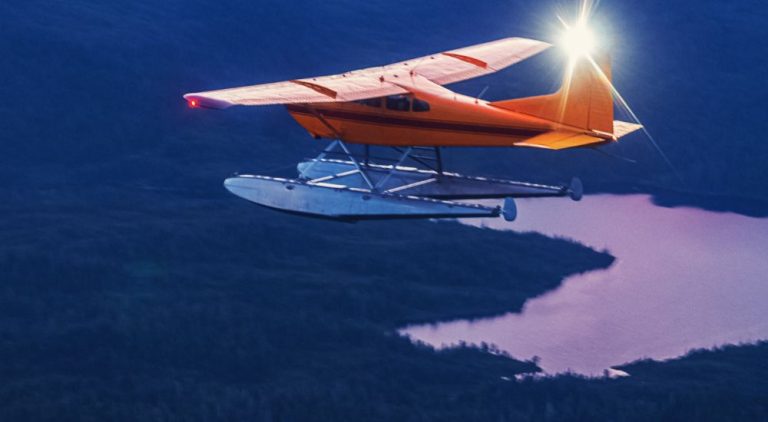How Much Bigger is Alaska Than Texas? A Clear Comparison
Alaska and Texas are two of the largest states in the United States, but just how much bigger is Alaska than Texas? The size comparison between these two states has been a topic of interest for many people, especially those who are planning to visit or move to either state.

According to recent statistics, Alaska is approximately 2.5 times bigger than Texas. Alaska has a land area of 663,268 square miles and a water area of 268,820 square miles, making it the largest state in the US by area. On the other hand, Texas has a land area of 268,597 square miles and a water area of 6,687 square miles, making it the second-largest state in the US by area.
The size difference between Alaska and Texas is not just limited to land area. Alaska has more coastline, more lakes, and more inland water than Texas, making it a popular destination for those who love water-based activities. Moreover, Alaska is known for its natural beauty that expands over five different climates, which boast glaciers, fjords, rainforests, rivers, lakes, and multiple mountain ranges that include the highest peak in North America.
Geographical Comparison of Alaska and Texas

Size and Scale
When it comes to measuring the size of states in the United States, Texas and Alaska are two of the largest. Alaska is approximately 118% larger than Texas, with a land area of about 1,481,348 square kilometers while Texas has a land area of approximately 678,052 square kilometers. This makes Alaska the largest state in the United States and the seventh largest sub-national division on earth.
Land and Water Features
Alaska and Texas differ greatly in terms of their physical characteristics. Alaska has a vast coastline of about 6,640 miles, while Texas has a coastline of about 367 miles. Additionally, Alaska has many inland water bodies such as lakes and rivers, while Texas has fewer. Alaska has over 3 million lakes and is home to the largest river in North America, the Yukon River. Texas, on the other hand, has only one natural lake, Caddo Lake, and the most significant river is the Rio Grande.
Population and Region Density
While Alaska is larger in size than Texas, it is sparsely populated. According to the United States Census Bureau, as of 2020, Alaska has a population of about 731,545 people, while Texas has a population of approximately 29,797,436 people. This means that Texas has a much higher population density than Alaska. Texas is also divided into several regions, each with its unique characteristics, such as the Gulf Coast Region, South Texas Plains, and the Hill Country. In contrast, Alaska is divided into five regions: Southeast, Southcentral, Interior, Southwest, and Far North.
Overall, Alaska and Texas are two very different states with unique geographical features and characteristics. While Alaska is much larger in size, Texas has a higher population density and is divided into several regions.
Significant Cities and High Points

Major Alaskan Cities
Alaska boasts of several major cities, including Anchorage, Juneau, and Fairbanks. Anchorage is the largest city in Alaska, with a population of over 291,000 people. Juneau, the capital city of Alaska, has a population of approximately 32,000 people. Fairbanks, on the other hand, is the second-largest city in Alaska, with a population of over 30,000 people.
Texas Urban Centers
Texas is home to several urban centers, including Houston, San Antonio, and Dallas. Houston is the largest city in Texas, with a population of over 2.3 million people. San Antonio, on the other hand, has a population of over 1.5 million people, while Dallas has a population of over 1.3 million people.
Notable Geographical High Points
Alaska has several notable geographical high points, including Denali, the highest peak in North America. Denali, formerly known as Mount McKinley, stands at an elevation of 20,310 feet above sea level. Other notable high points in Alaska include Mount Saint Elias, Mount Blackburn, and Mount Hayes.
Texas, on the other hand, has Guadalupe Peak, which is the highest point in the state. Guadalupe Peak stands at an elevation of 8,751 feet above sea level. Other notable high points in Texas include Mount Livermore and Emory Peak.
In terms of size, Alaska is significantly larger than Texas. This is evident in the number and size of the cities and high points in each state.
Frequently Asked Questions

What is the size comparison between Alaska and Texas?
Alaska is significantly larger than Texas in terms of land area. According to the latest available data, Alaska covers 1,481,348 square kilometers, while Texas covers 678,052 square kilometers. This means that Alaska is approximately 118% larger than Texas.
Can you fit multiple Texases in Alaska, and if so, how many?
Yes, you can fit multiple Texases in Alaska. In fact, you can fit more than two and a half Texases in Alaska. To be more precise, you can fit approximately 2.18 Texases in Alaska.
How does the size of Alaska compare to the entire contiguous United States?
Although Alaska is significantly larger than Texas, it is only the largest state in the United States when it comes to land area. When compared to the entire contiguous United States, Alaska is actually smaller. The contiguous United States covers approximately 8,080,464 square kilometers, which is almost six times larger than Alaska.
Is Alaska’s land area larger than that of Mexico?
No, Alaska’s land area is not larger than that of Mexico. Mexico is the 14th largest country in the world and covers an area of approximately 1,964,375 square kilometers, which is larger than Alaska’s land area.
How does Alaska’s population compare to Texas?
Despite being significantly larger than Texas in terms of land area, Alaska’s population is much smaller. According to the latest available data, Alaska has a population of approximately 731,545 people, while Texas has a population of approximately 29 million people.
How many of the lower 48 states can be combined to match Alaska’s size?
Alaska is so large that it can fit more than 19 of the lower 48 states combined. To be more precise, Alaska’s land area is approximately 2.72 times larger than the combined land area of the lower 48 states.






